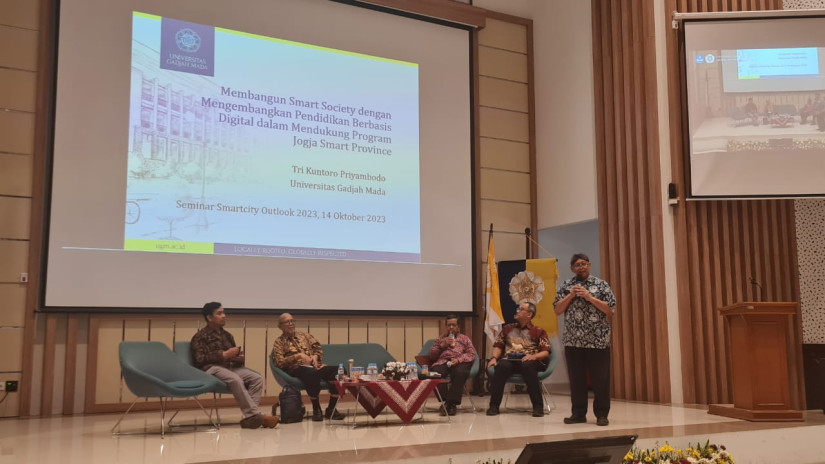
The rapid development of technology has made information systems faster and limitless. The Smart City concept is one solution offered to harness the advantages of modern technology.
The UGM Faculty of Mathematics and Natural Sciences addressed this issue in a seminar entitled “Smart City Outlook 2023: Big Data” recently.
“The realization of a Smart City necessitates collaboration between scientific and social disciplines. This synergy is crucial to foster diverse perspectives, particularly in the context of climate change awareness,” said Professor Kuwat Triyana, the Dean of the UGM Faculty of Mathematics and Natural Sciences.
“A Smart City, even with cutting-edge technology, may not be effective if it fails to influence people’s behavior, such as reducing plastic consumption; this is what needs to be covered in this concept. This behavioral aspect must be a central consideration in the Smart City concept.”
One crucial aspect underlying the Smart City concept is the management of big data. The advancement of Artificial Intelligence (AI) is just one of many data-driven technological developments.
Life in this era is also inseparable from the community’s use of the internet and digital platforms. Dr. Tri Kuntoro Priyambodo, from the Department of Computer Science and Electronics at UGM, explained how people’s lives depend highly on technology.
“At first, we became familiar with Industry 4.0, whose core is automation/robotics, then AI was added, and big data. These three things seemingly worry people because how will humans handle this?” Dr. Priyambodo expressed.
“One issue in this digital world is that what we open, where we log in, is recorded by the system. On the one hand, it’s part of our security system, but on the other hand, it also spies on us. This data is then accumulated and becomes customer behavior data.”
Fundamentally, technology is designed to make human life easier, not to replace human existence. Hence, Industry 5.0 emerged, aiming to harmonize the relationship between humans and technology.
The achievement of this goal will depend on how well humans understand and master the technology itself. This is what the Smart City concept needs to embody.
“Smart Society is one dimension of the Smart City, focusing on humans as city elements. Within the Smart City, human interaction moves towards a socio-technical ecosystem, where the physical and virtual dimensions converge,” Dr. Priyambodo explained.
“So, the community needs to be technologically smart. This will be obtained through learning.”
In order to create a Smart Society, three essential elements must be fulfilled. These are the elements of the community, the learning ecosystem, and security. These elements will shape a dynamic society with a high level of technological literacy and digital protection while remaining humane.
Author: Tasya
Translator: Salma

